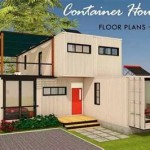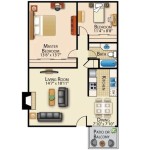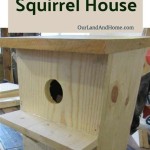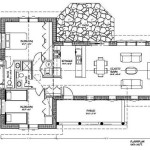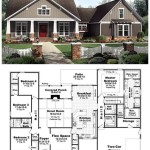A narrow lot house plan is a design specifically created for constrained building sites with limited width. It optimizes space utilization by incorporating vertical elements and clever architectural features to create functional and stylish living spaces. An example of a narrow lot house plan is the “Skinny House” in Toronto, Canada, which has a width of just 4 feet wide, but maximizes space through its thoughtful layout and innovative design.
Narrow lot house plans offer numerous advantages, including effective use of limited space, cost-efficiency due to reduced land area requirements, and increased privacy resulting from reduced side setbacks. They are particularly suitable for urban or suburban settings where land is scarce and building space is at a premium. As we delve into the main body of this article, we will explore the key principles, design considerations, and benefits of narrow lot house plans in greater detail.
When designing a narrow lot house plan, several important points should be considered to ensure optimal functionality and aesthetics:
- Maximize vertical space
- Utilize natural light
- Create open floor plans
- Incorporate multi-purpose spaces
- Consider outdoor living areas
- Plan for ample storage
- Maintain privacy
- Enhance curb appeal
By carefully addressing these key points, architects and homeowners can create narrow lot houses that are both stylish and comfortable, without compromising on functionality or livability.
Maximize vertical space
In narrow lot house plans, maximizing vertical space is crucial to create the illusion of spaciousness and accommodate all necessary living areas. This can be achieved through various design techniques:
Multi-story construction: Building upwards with multiple stories is an effective way to increase living space without expanding the footprint of the house. This is particularly suitable for narrow lots where horizontal space is limited.
High ceilings: Raising the height of ceilings creates a sense of grandeur and spaciousness. Natural light can also be maximized by installing large windows that extend towards the ceiling.
Loft spaces: Utilizing the space under sloping roofs by creating loft areas provides additional square footage for bedrooms, offices, or storage. These spaces can be accessed via stairs or ladders.
Vertical storage: Installing tall cabinets, shelves, and built-in furniture helps optimize vertical space for storage purposes. This keeps the house organized and clutter-free.
By maximizing vertical space, narrow lot house plans can create comfortable and functional living environments without compromising on space or style.
Utilize natural light
Incorporating natural light into narrow lot house plans is essential for creating bright and airy living spaces. This can be achieved through thoughtful window placement and the use of reflective surfaces:
- Large windows: Installing large windows along exterior walls allows for ample natural light to enter the home. Consider floor-to-ceiling windows or large picture windows to maximize the amount of light.
- Skylights: Skylights are an excellent way to bring natural light into the interior of the house, especially in areas where there are limited exterior walls. They can be placed in hallways, bathrooms, or even over staircases.
- Light-colored interiors: Using light-colored paint and finishes on walls and ceilings helps reflect and distribute natural light throughout the house, making it feel more spacious and inviting.
- Mirrors: Strategically placed mirrors can reflect natural light and create the illusion of a larger space. Place mirrors opposite windows or in areas with limited natural light to enhance brightness.
By utilizing natural light effectively, narrow lot house plans can create comfortable and energy-efficient living environments that are filled with natural light and reduce the need for artificial lighting.
Create open floor plans
In narrow lot house plans, creating open floor plans is crucial to enhance the sense of spaciousness and allow for a more flexible and functional living environment:
- Eliminate unnecessary walls: Removing non-load-bearing walls between rooms, such as those separating the living room from the dining room or kitchen, creates a more open and expansive feel. This allows for better flow of natural light and makes the house feel larger.
- Use multi-purpose spaces: Open floor plans encourage the use of multi-purpose spaces that can serve multiple functions. For example, a living area can also incorporate a dining space or a home office nook, maximizing space utilization.
- Define spaces with furniture and rugs: While open floor plans aim to create a sense of spaciousness, it’s important to define different areas within the space using furniture, rugs, or room dividers. This helps create a sense of separation and organization without the need for physical walls.
- Incorporate built-in storage: Built-in storage solutions, such as shelves, cabinets, and drawers, can be seamlessly integrated into open floor plans to keep clutter at bay and maintain a clean and organized space.
By creating open floor plans, narrow lot house plans can maximize space, enhance natural light flow, and create flexible and functional living environments that adapt to the needs of modern living.
Incorporate multi-purpose spaces
Incorporating multi-purpose spaces is a clever design strategy to maximize space and functionality in narrow lot house plans. These spaces can serve multiple functions, reducing the need for separate rooms and creating more flexible and adaptable living environments.
One common example of a multi-purpose space is a living area that also incorporates a dining space. By eliminating the traditional separation between these two areas, the space becomes more open and versatile. The dining table can double as a workspace or study area when needed, while the living room can easily accommodate guests for entertaining.
Another example is a guest room that can be transformed into a home office or library when not in use. This allows for a dedicated space for work or hobbies without sacrificing a separate guest room. Built-in furniture, such as a Murphy bed or a fold-down desk, can further enhance the functionality of these multi-purpose spaces.
Multi-purpose spaces can also extend to outdoor areas. A small backyard, for instance, can be designed to accommodate both a seating area and a small garden, creating a functional and inviting outdoor space for relaxation and recreation.
By incorporating multi-purpose spaces into narrow lot house plans, homeowners can maximize space utilization, create more flexible and adaptable living environments, and reduce the need for separate rooms, resulting in more efficient and functional homes.
Consider outdoor living areas
In narrow lot house plans, incorporating outdoor living areas is essential to extend the living space and create a seamless connection between the interior and exterior of the home.
One way to achieve this is by designing a small patio or deck adjacent to the main living area. This outdoor space can be used for dining, entertaining, or simply relaxing and enjoying the fresh air. To maximize space, consider using foldable or retractable furniture that can be easily stored when not in use.
Another option is to create a vertical garden on a wall or fence. This not only adds a touch of greenery to the outdoor space but also provides privacy and can be used to grow herbs, vegetables, or flowers.
If space allows, consider adding a small water feature, such as a fountain or pond. The sound of water can create a tranquil and inviting atmosphere, making the outdoor living area a relaxing retreat.
By incorporating well-designed outdoor living areas into narrow lot house plans, homeowners can expand their living space, create a connection to nature, and enhance the overall livability and enjoyment of their homes.
Plan for ample storage
In narrow lot house plans, maximizing storage space is crucial to maintain a clutter-free and organized living environment. Here are some key considerations for incorporating ample storage into your design:
- Utilize vertical space: Make use of vertical space by installing tall cabinets, shelves, and drawers. Floor-to-ceiling storage solutions can maximize storage capacity without taking up valuable floor space.
- Incorporate built-in storage: Built-in storage, such as benches with hidden compartments or ottomans with built-in drawers, provides additional storage without compromising on style. These pieces can be seamlessly integrated into the design of the home, creating a cohesive and functional space.
- Multi-purpose furniture: Choose furniture that serves multiple functions and incorporates storage. For example, a coffee table with drawers or a bed with built-in storage can provide extra space for blankets, pillows, or other belongings.
- Maximize underutilized spaces: Utilize often-overlooked spaces for storage, such as under stairs, in closets, or even in the eaves of the house. Custom-designed storage solutions can be tailored to fit these spaces, providing additional storage capacity without sacrificing valuable living space.
By carefully considering storage needs and incorporating innovative storage solutions, narrow lot house plans can create functional and organized living spaces that meet the demands of modern living.
Maintain privacy
In narrow lot house plans, maintaining privacy is essential to ensure a sense of security and seclusion within the home. Here are some key considerations for enhancing privacy in your design:
- Strategic window placement: Carefully consider the placement of windows to minimize direct views into the home from neighboring properties. Utilize frosted glass, curtains, or blinds to provide privacy while still allowing natural light to enter.
- Landscaping and fencing: Incorporate landscaping elements such as hedges, trees, or fences to create a physical barrier between the home and adjacent properties. This can help block unwanted views and provide a sense of seclusion.
- Privacy screens: Install privacy screens or trellises on patios or decks to create a more private outdoor space. These screens can be made from a variety of materials, including wood, fabric, or bamboo.
- Smart home technology: Utilize smart home technology, such as motion-activated lights or security cameras, to deter potential intruders and enhance the sense of security within the home.
By incorporating these privacy-enhancing measures, narrow lot house plans can create homes that offer a sense of security and seclusion, even in densely populated urban areas.
Enhance curb appeal
Curb appeal is an important factor that contributes to the overall aesthetic and value of a home. In narrow lot house plans, enhancing curb appeal requires careful consideration of the home’s exterior design and landscaping to create a visually appealing and inviting facade.
One key aspect of enhancing curb appeal is to choose an attractive and cohesive exterior design. This includes selecting a color scheme that complements the surrounding environment and architectural style of the home. Consider using a combination of materials and textures, such as brick, stone, and wood, to add visual interest and depth to the facade.
Landscaping plays a significant role in enhancing curb appeal. Carefully planned landscaping can frame the home and create a welcoming atmosphere. Consider planting a variety of plants, including trees, shrubs, and flowers, to add color and texture to the exterior. Well-maintained lawns and walkways also contribute to a positive first impression.
Incorporating outdoor lighting can further enhance curb appeal, particularly during evening hours. Strategic placement of lights can highlight architectural features, create a warm and inviting ambiance, and improve safety and security. Consider using a combination of ambient, task, and accent lighting to create a balanced and visually appealing exterior lighting scheme.
By carefully considering these elements, narrow lot house plans can create homes with exceptional curb appeal that make a lasting impression and add value to the property.










Related Posts

